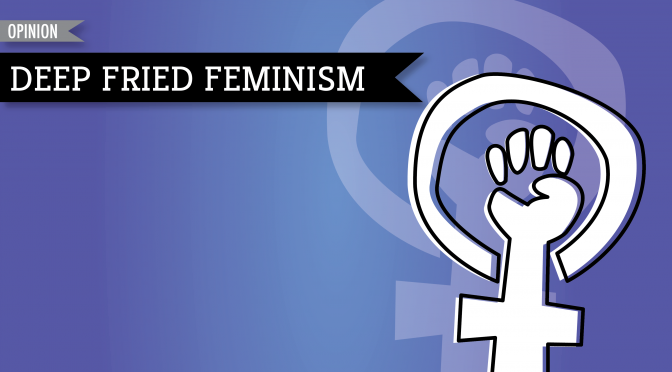
The wage gap goes beyond gender
By: Megan Graves, Columnist
When people talk about feminism, there’s an overarching stigma that the movement solely benefits white, upper-class women. This form of feminism is called liberal feminism, reformist feminism, or white feminism.
This ideology involves craving equality with men without acknowledging that there’s a certain amount of inequality within the total demographic of women as a whole. In other words, reformist feminists want to be equal within the existing system. However, it is undeniable that our existing system in the United States is not only sexist: it’s racist and classist as well.
Let’s table the idea of white feminism for a moment to discuss the wage gap. You’ve probably heard that in general, women make 77 cents for every dollar a man earns. However, this is a very broad statistic. According to the website for the American Association of University Women, Asian American women make 90 percent of a white man’s earnings. From there, it just keeps getting lower. White (non-Hispanic) women make 78 percent, African American Women make 63 percent, Native Hawaiian and Other Pacific Islander women make 62 percent, American Indian and Alaska Native women make 59 percent, and Hispanic or Latina woman only make 54 percent of a white man’s earnings.
This is a prime example of not only the sexism, but also the racism that exists within our system. It is unfair to say that women make 77 cents on the dollar because most women are actually making less than that. That common statistic is based on white women’s earnings, and the fact that so many of us are familiar with it is a byproduct of white feminism.
Reformist feminists want to be paid equally to men, but they don’t acknowledge or attempt to change the fact that some of their sisters are being paid even less than they are. Luckily, there’s a different type of feminism, called revolutionary feminism. Revolutionary feminists acknowledge the major flaws within the system and believe we should rebuild a new, equal system, in which we acknowledge the struggles and differences in people of all different races, classes and genders. They believe that in order for women to become fully equal to men, we need to make sure all women are equal with each other first.
Next week I’ll be discussing how women of different classes have different experiences, and how those experiences need to be acknowledged within feminism. Bringing the issues that come with race and class into the equation makes feminism intersectional. This mean that different forms of oppression can be linked together and need to be addressed within each other, in this case, race and class need to be discussed when we talk about feminism. There’s a quote we like to use in the revolutionary feminist community, and that quote is “my feminism will be intersectional, or it will be bullshit.”


So wait, are black men also paid less than white men, or does discrimination against them not matter because they’re men?
That matters too. Just wouldn’t be classed as feminism.